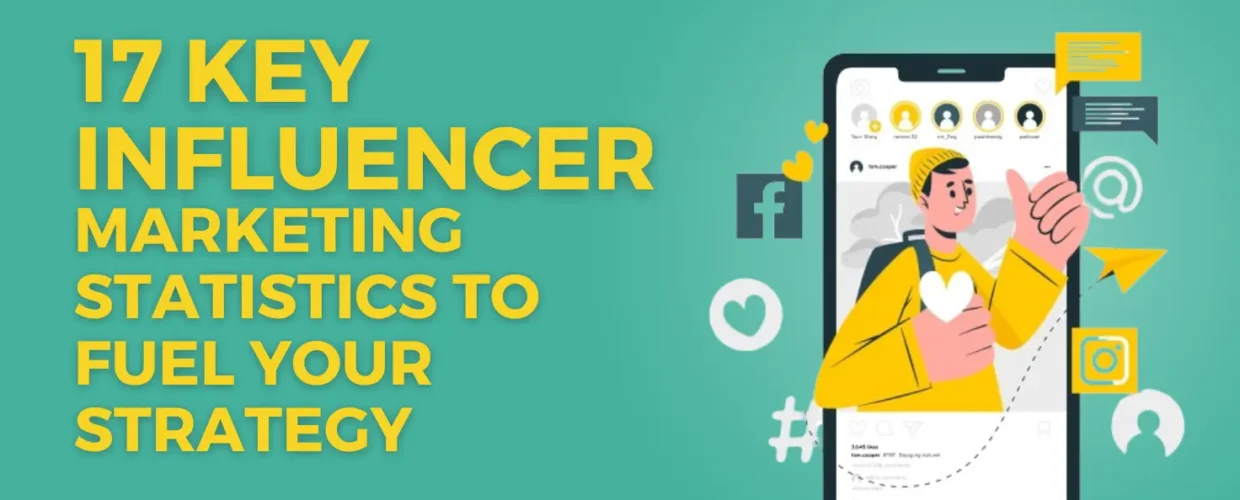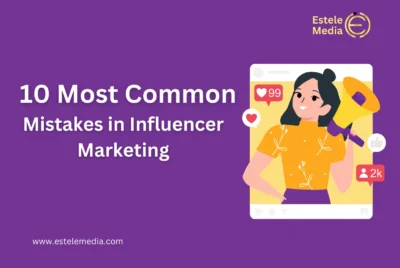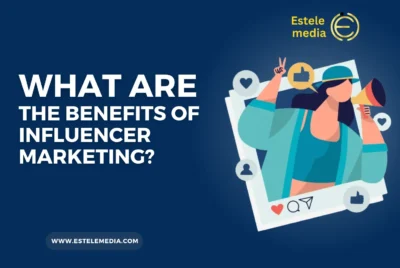Influencer marketing is not just a passing trend – it’s a dynamic and evolving element of modern digital marketing. To understand its impact and plan your strategy effectively, it’s important to look at the numbers. In this blog post, we’ll dive into 17 key statistics that shed light on the influence and effectiveness of influencer marketing.
1. The Growing Market Size
The influencer marketing industry is booming. It’s projected to grow to approximately $13.8 billion in 2021, up from $9.7 billion in 2020. This rapid growth signals the increasing importance and investment in influencer marketing strategies.
2. High ROI
For every dollar spent on influencer marketing, brands are seeing an average return of $5.20. This impressive return on investment makes influencer marketing one of the most efficient forms of online marketing.
3. The Rise of Micro-Influencers
While celebrity influencers have their appeal, micro-influencers are gaining traction. Approximately 91% of millennials trust online reviews as much as friends and family, making the authentic voices of micro-influencers incredibly powerful.
4. Consumer Preferences for Authenticity
Around 90% of consumers trust peer recommendations, while only 33% trust traditional ads. This preference for authenticity is driving brands to partner with influencers who can provide genuine endorsements.
5. Influencer Engagement Rates
Influencer campaigns tend to generate higher engagement rates compared to traditional digital ads. On average, influencer marketing campaigns earn a 5.7 times higher engagement rate than standard digital ads.
6. The Effectiveness of Influencer Content
Around 49% of consumers depend on influencer recommendations for their purchase decisions. This statistic underscores the impact influencers have on shaping consumer behaviour.
7. Social Media’s Role
Social media continues to be a primary platform for influencer marketing, with Instagram leading the way. Nearly 79% of brands predominantly use Instagram for influencer campaigns.
8. Growing Importance of Video Content
Video content is becoming increasingly important, with 80% of global internet consumption projected to be video content. Influencers who leverage video effectively can significantly boost engagement and reach.
9. The Power of Stories
Instagram Stories are particularly effective, with one-third of the most viewed stories coming from businesses. This format’s ephemeral nature drives higher engagement and is a favourite among influencers.
10. Influencer Marketing and Millennials
Millennials are the most engaged with influencer content, with 70% of teens trusting influencers more than traditional celebrities. This demographic’s preferences are shaping the future of influencer marketing.
11. Influencer Impact on Purchasing Decisions
About 40% of consumers reported purchasing a product online after seeing it used by an influencer on YouTube, Instagram, or Twitter. Influencers’ recommendations are a powerful motivator in consumer purchasing decisions.
12. The Rise of Influencer Platforms
There’s been a surge in influencer platforms and marketplaces, with a 26% increase in 2019 alone. These platforms make it easier for brands to connect with the right influencers.
13. The Shift Towards Long-Term Partnerships
Long-term collaborations between brands and influencers are becoming more common. About 37% of influencers believe that long-term relationships are more successful than one-off projects.
14. Challenges in Measuring ROI
Measuring ROI is still a challenge in influencer marketing, with 78% of marketers citing it as their biggest challenge in 2021. This emphasizes the need for effective analytics tools in influencer campaigns.
15. The Preference for Instagram
Instagram continues to be the preferred platform for influencer marketing, with over 4 billion likes per day. Its diverse content formats (posts, stories, IGTV) make it highly versatile for different types of influencer campaigns.
16. The Impact of COVID-19
The COVID-19 pandemic has increased social media consumption and online spending, leading to a 46% increase in influencer marketing spending in 2020. This trend highlights the adaptability of influencer marketing in times of change.
17. Future Growth Predictions
The influencer marketing industry is expected to grow to $15 billion by 2022. This growth trajectory reflects the increasing confidence in influencer marketing as a key part of digital marketing strategies.
Read our latest blog on The Power of Influencer Marketing: Why Brands Should Collaborate with Influencers
Conclusion
These statistics paint a clear picture of the current state and immense potential of influencer marketing. They demonstrate not only the effectiveness of influencer campaigns but also the evolving nature of consumer preferences and digital marketing trends. As a marketer, leveraging these insights can help you craft a more informed, strategic, and successful influencer marketing campaign.
Remember, the world of influencer marketing is dynamic and ever-changing. Staying abreast of these trends and statistics will help you adapt your strategies to the evolving digital landscape, ensuring your influencer marketing efforts remain impactful and relevant.
Are you ready to incorporate these insights into your influencer marketing strategy? The time to start is now – the future of digital marketing is influencer-driven, and these statistics are your roadmap to success. Let’s embark on this journey together!
Take Your Brand to the Next Level
Jumpstart your influencer marketing journey with us! Explore our Influencer Marketing Services for expert guidance and tailored strategies.And take your brand to new heights!



